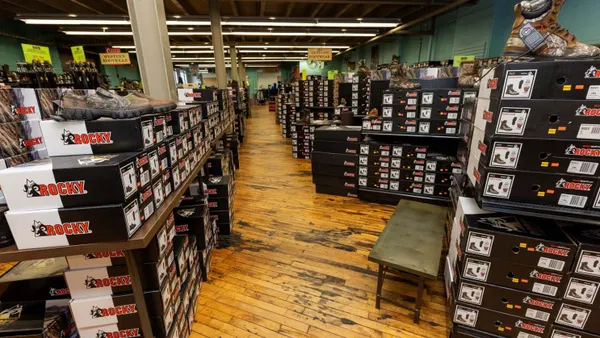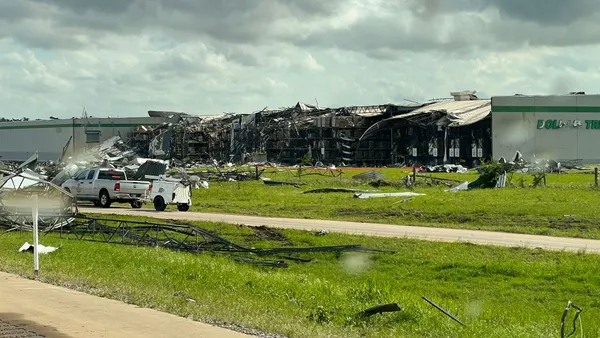Dive Brief:
- Raw material and commodities prices are increasing, signaling a shift in pricing power into the hands of suppliers rather than buyers, according to The Institute for Supply Management's manufacturing report released Tuesday. ISM's Prices Index was 59.5% in August, up from 53.2% in July.
- "Place your orders. Capture the current prices," ISM Chair Timothy Fiore said. Resources including aluminum, copper, freight, packaging and some types of steel are up in price, according to the report. "No industry reported a decrease in input prices," the report said.
- The increased prices come as manufacturing activity grows, with ISM's PMI at 56% in August, up from 54.2% in July. Fiore cautioned that manufacturing has not yet returned to pre-pandemic levels. "We're operating probably at 70% output, but that's really good considering we were at zero percent output in April and May," he said.
Dive Insight:
Commodity prices, notoriously volatile, fluctuate alongside changes in supply and demand. Several of the metrics ISM tracks in its monthly manufacturing report indicate growing demand in August. New orders were up, production grew and imports increased.
A manufacturer of electrical equipment, appliances and components reported "strong demand from existing and new customers for our products ... and record numbers of new business opportunities from prospective customers’ reshoring measures."
Yet as demand rebounds, supply has not necessarily been able to keep pace — an economic dynamic contributing to rising raw material prices. "Business is very good. Production cannot keep up with demand," said one respondent in the chemical industry. "Some upstream supply chains are starting to have issues with raw material and/or transportation availability."
The supplier deliveries index registered 58.2% last month, a slowdown from 55.8% in July, and delivery issues will likely persist in the coming months, ISM's report said.
Some suppliers have faced challenges keeping workers safe on the factory floor, resulting in decreased output or facility closures.
"We have started and stopped lines numerous times at all 18 of our manufacturing plants due to COVID-19 issues," said one respondent in food, beverage and tobacco products. Several coronavirus outbreaks have been traced back to food processing plants.
Many suppliers have also faced liquidity issues, according to Fiore. "The summary of what I got from all the comments was that suppliers are the biggest constraint to further growth," he said. But Fiore said product shortage issues were lessening. ISM reported short supply in commodities such as aluminum cans, freight and personal protective equipment.
Uncertainty in supply and pricing continues across industries. So, Fiore recommended procurement managers plan for next year sooner than later.
"Normally, you start to lay your orders in the November timeframe for 2021," he said. "I would suggest that people start to do that earlier."
This story was first published in our weekly newsletter, Supply Chain Dive: Procurement. Sign up here.













